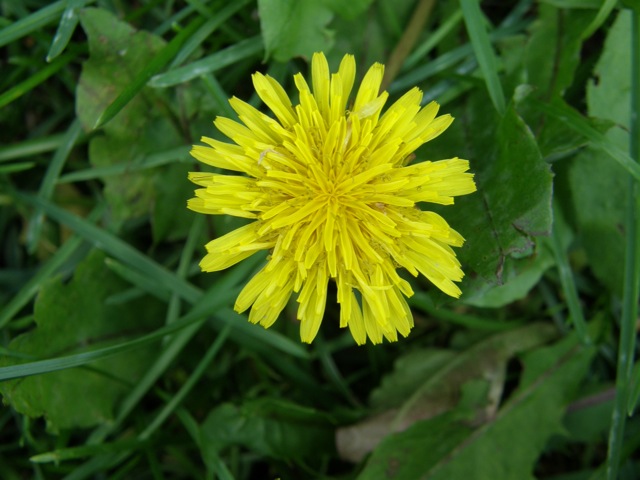Asteraceae, the daisy, sunflower or composite family.
Description:
Plant:
Rosette of basal leaves with yellow, many-rayed flower heads, 1.5",
on slender, hollow stalks. Plant has milky juice.
Flowers:
Heads consisting of many yellow ray flowers, each petal with five minute
terminal teeth, about 1.5" across.
Flowers on slender, hollow stems, to 18", but often much shorter.
Leaves:
Basal, elliptic to obovate, deeply lobed and toothed, to 16", but usually
much shorter. Leaves exude milky sap when broken.
Fruit:
Small dry seed attached to downy "parachute"; fruiting heads are
globular.
Blooming:
April through frost, with an initial burst in spring. May also bloom
during warm spells in the winter.
Habitat:
Lawns, fields, and roadsides.
Comments:
This species is considered to be introduced from Europe, and occurs
throughout North America where it is frequently a troublesome lawn weed.
The seeds are transported long distances by the wind.
The common name comes from old French "dent de lion" - the tooth of the lion,
referring to the toothed leaves.
The plant is edible, the young leaves used as a potherb, or in salads.
If not very young or blanched, the leaves are best boiled in one or more
changes of water to reduce the bitter taste.
The roots have supposedly been used as starvation food, although they are
fibrous, bitter, and seem scarcely edible.
Roasted and ground, they have been used like chicory as a coffee extender.
Perennial.
Where to find it:
Common in the lawn areas of the park.
